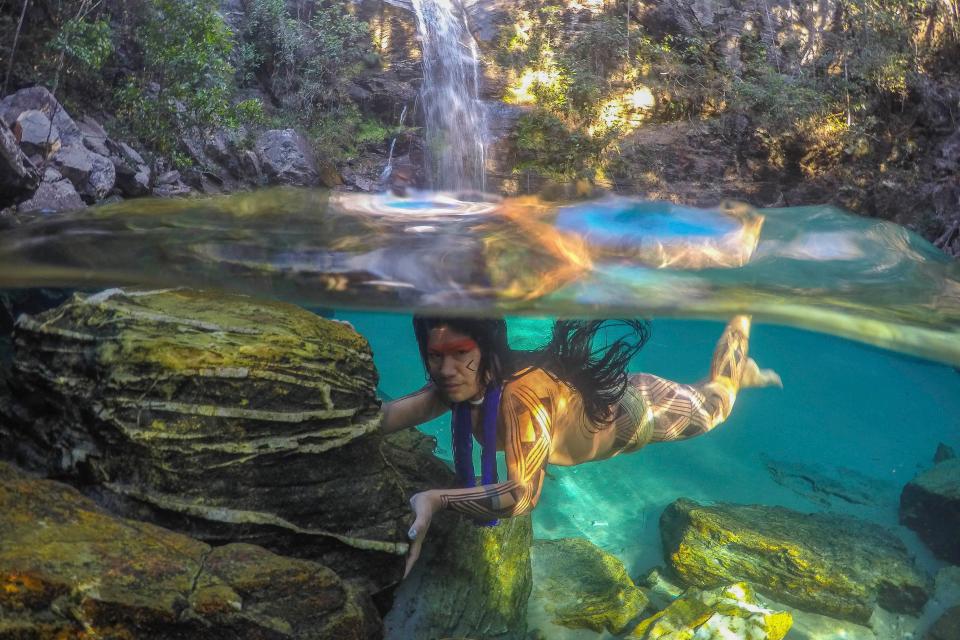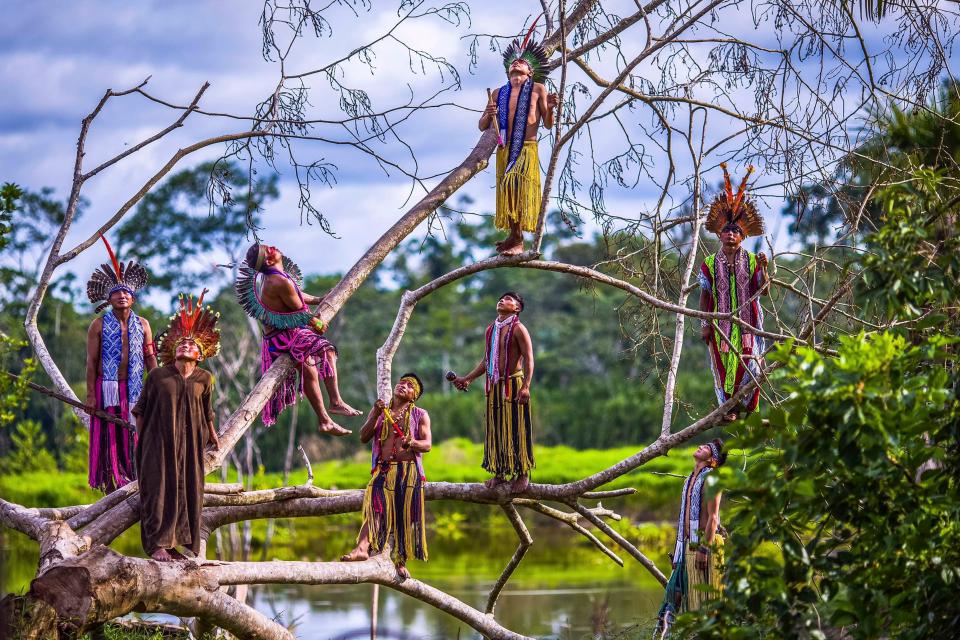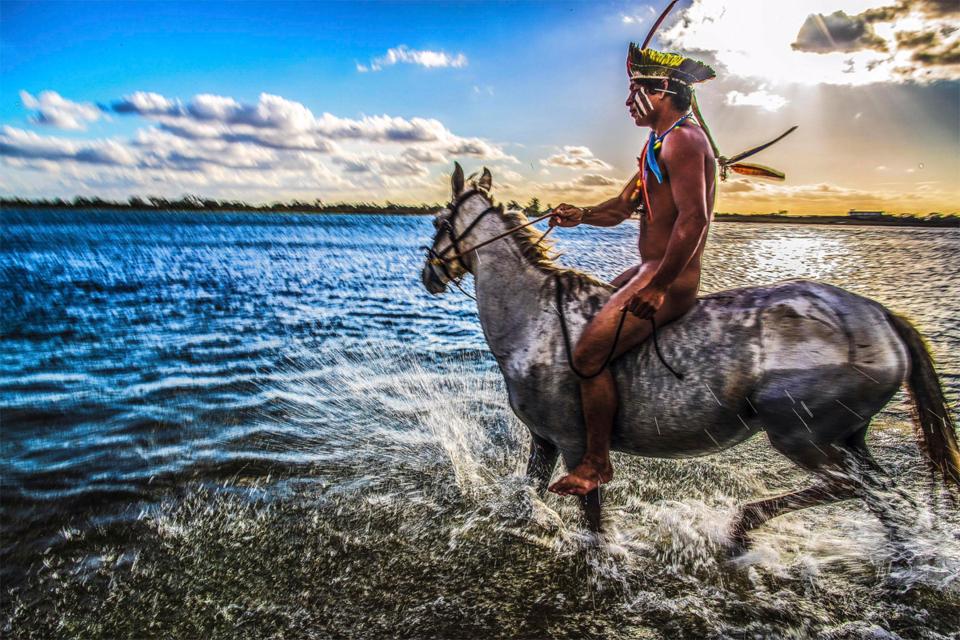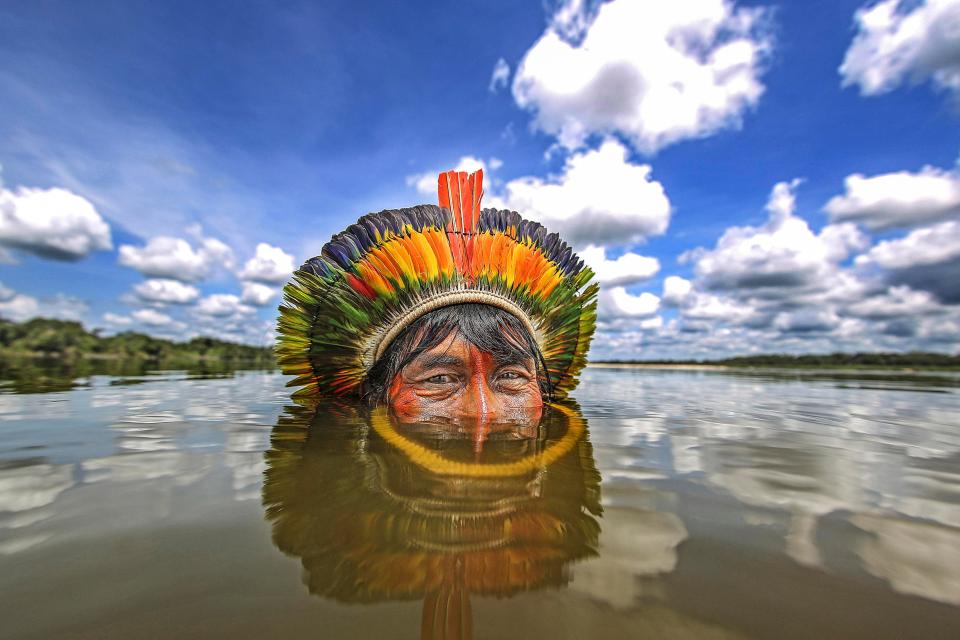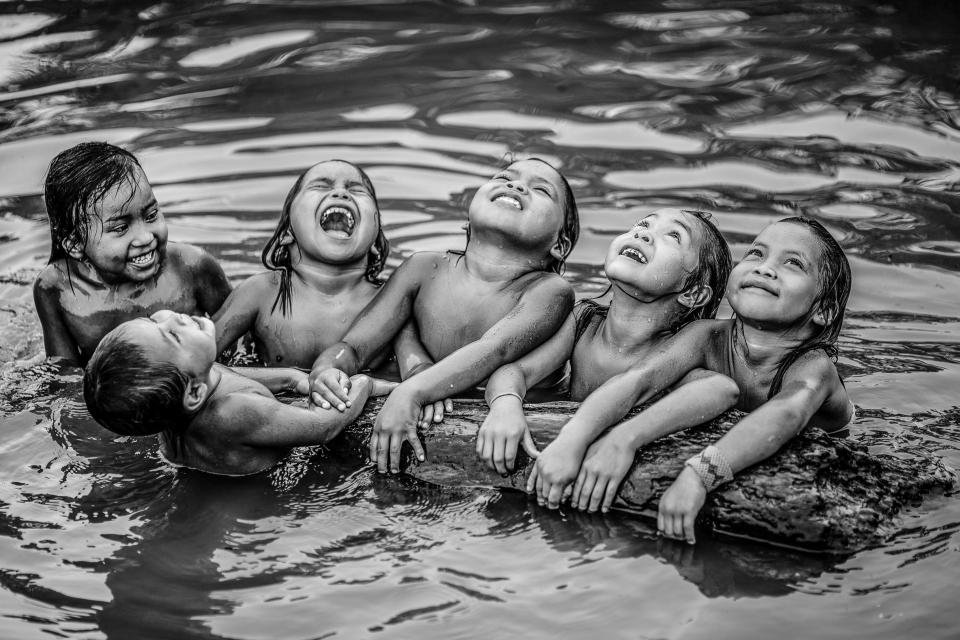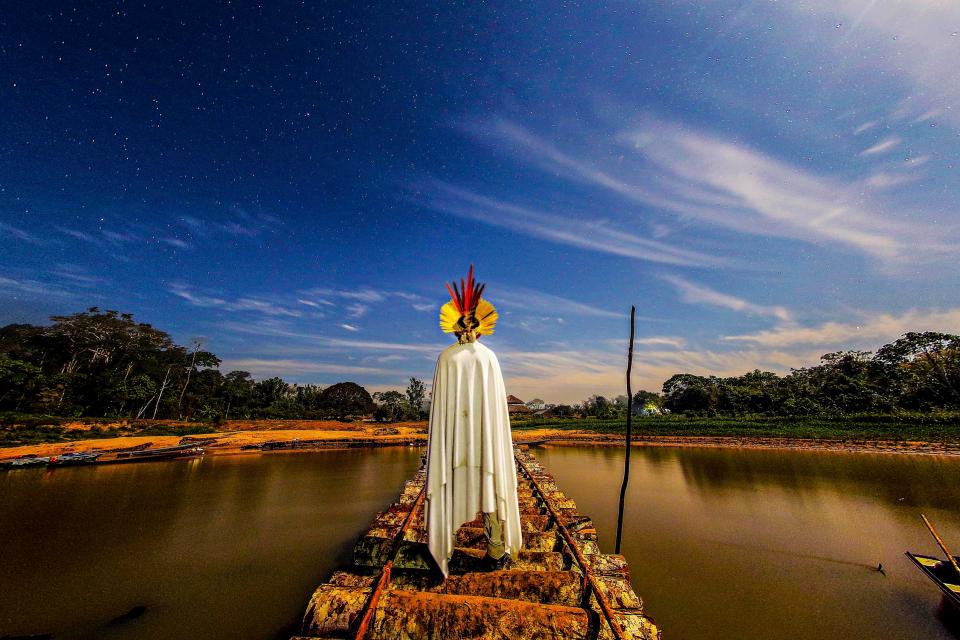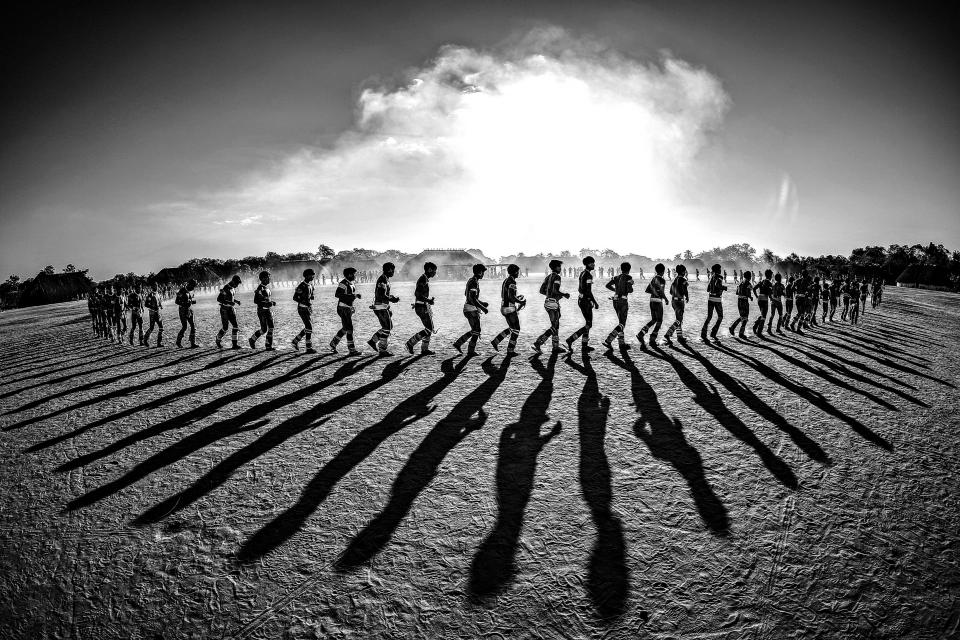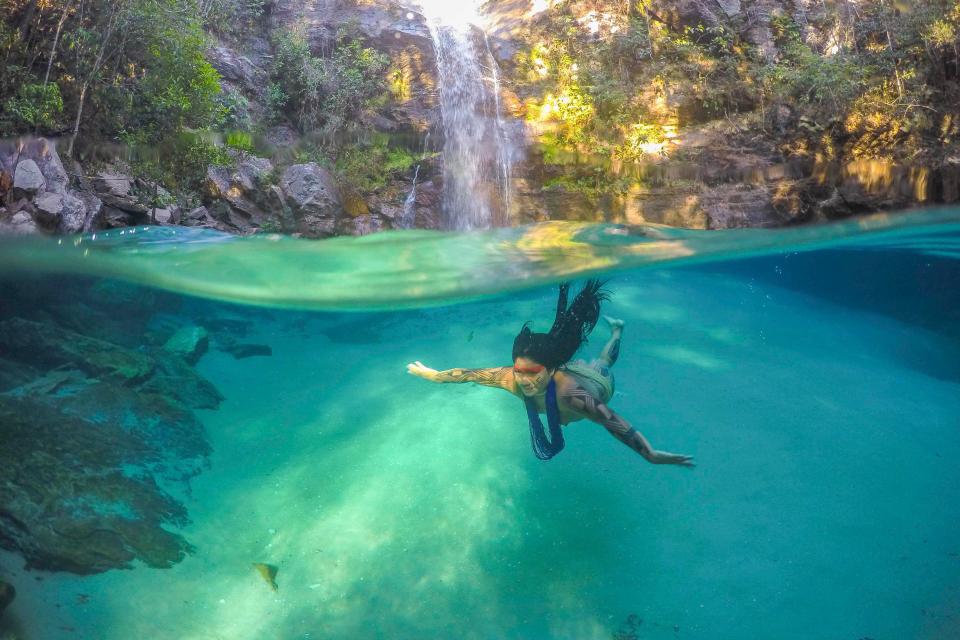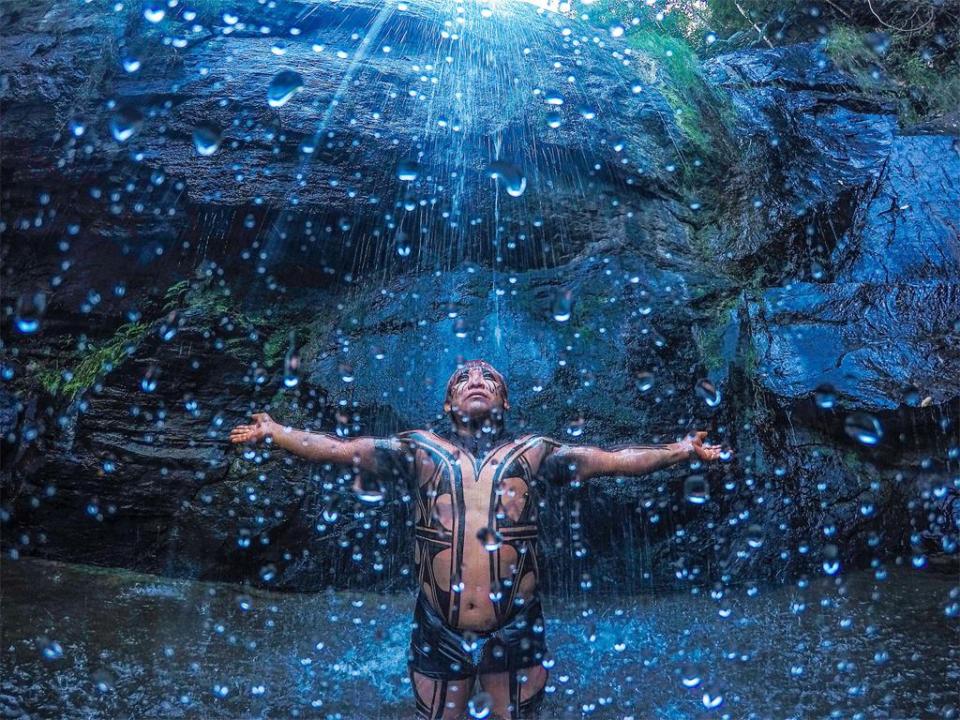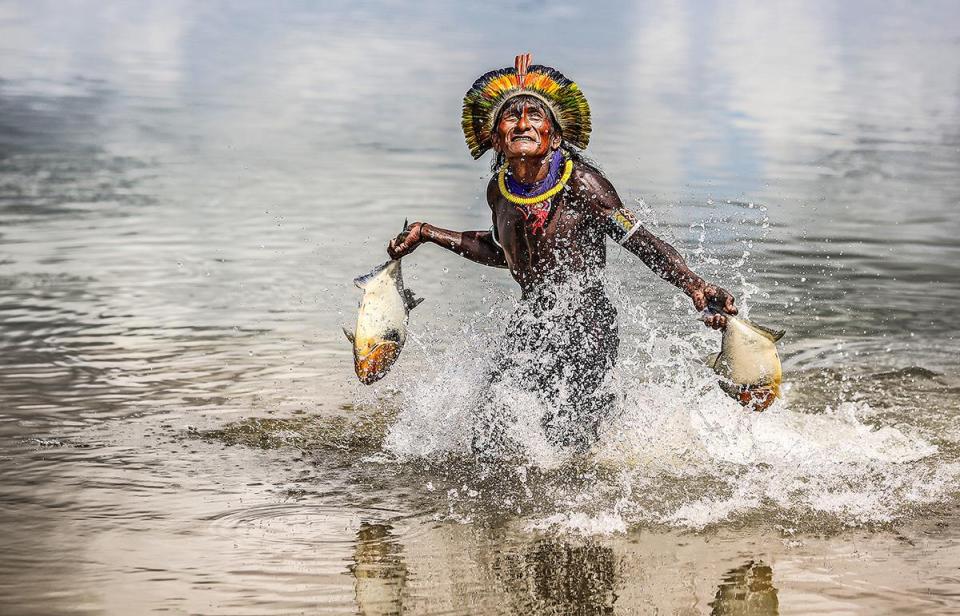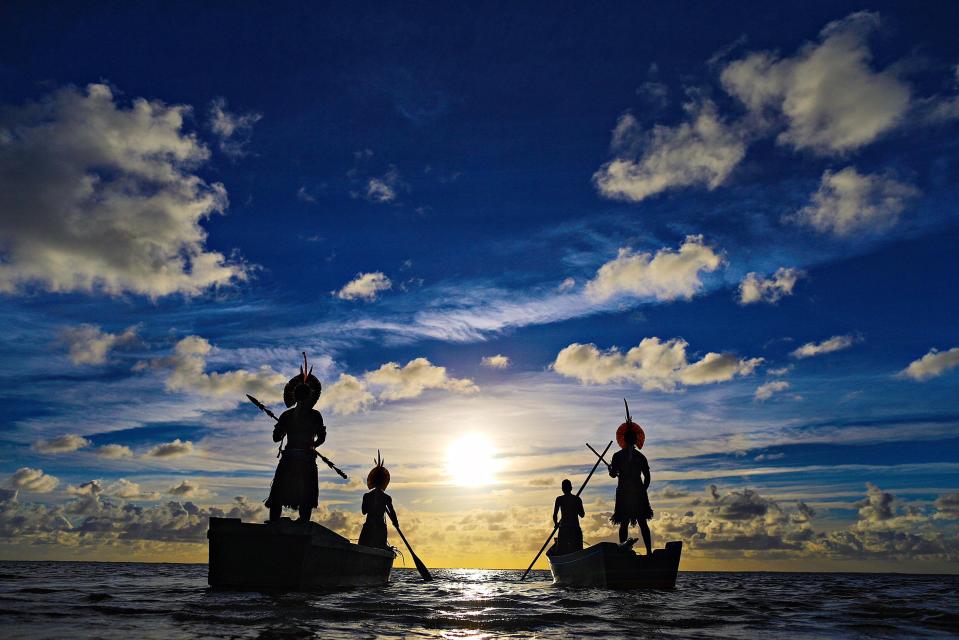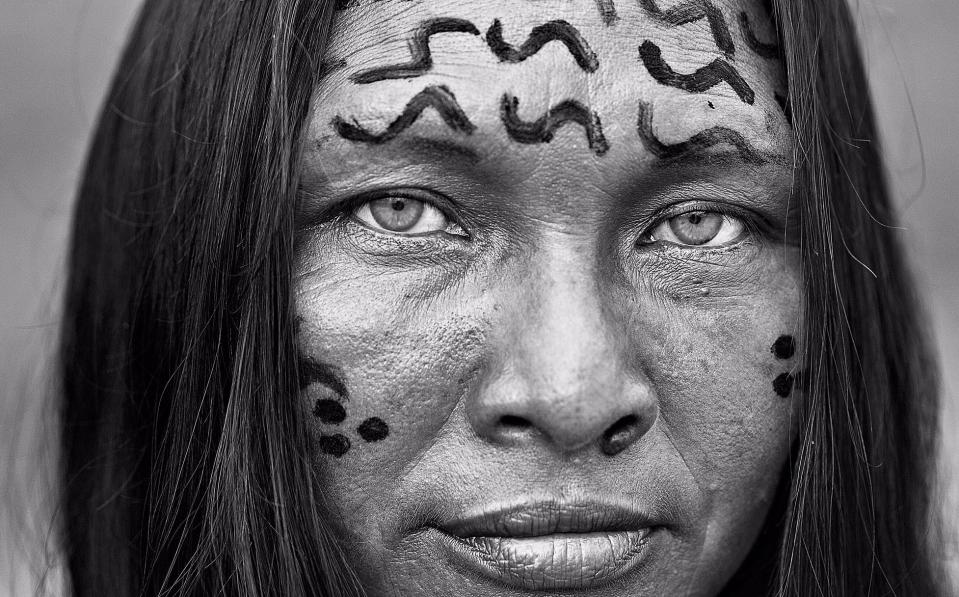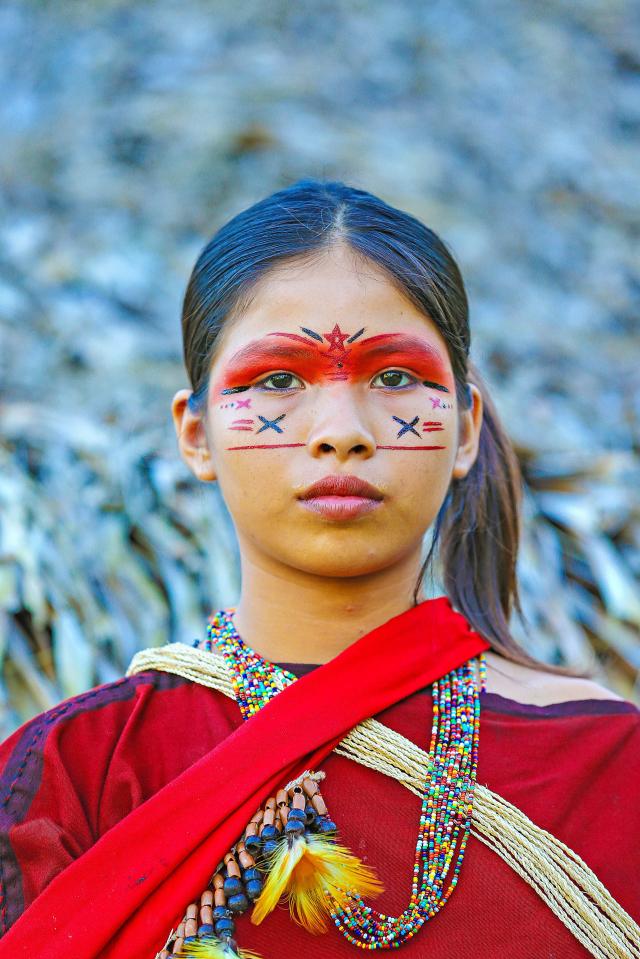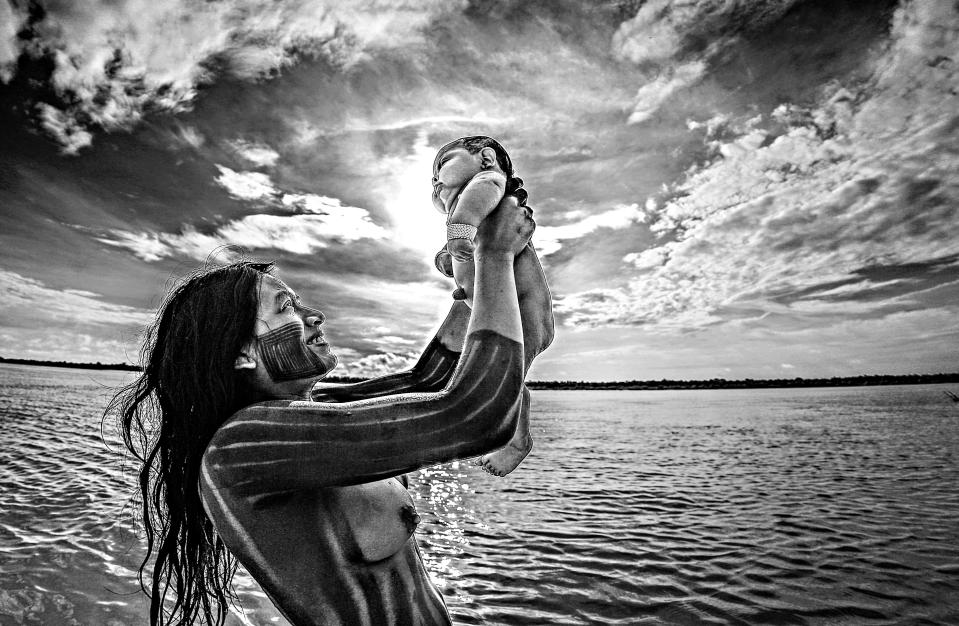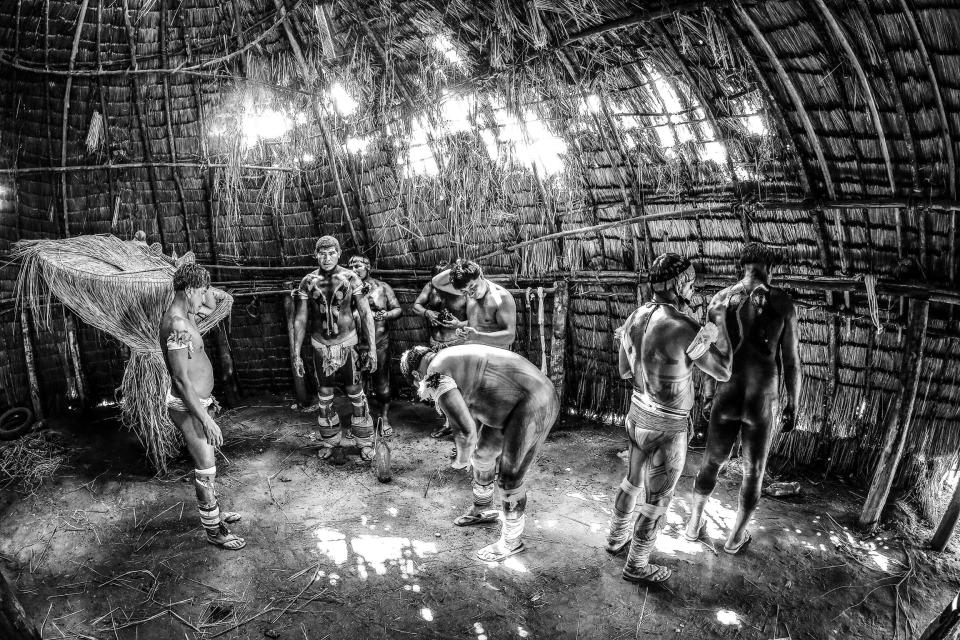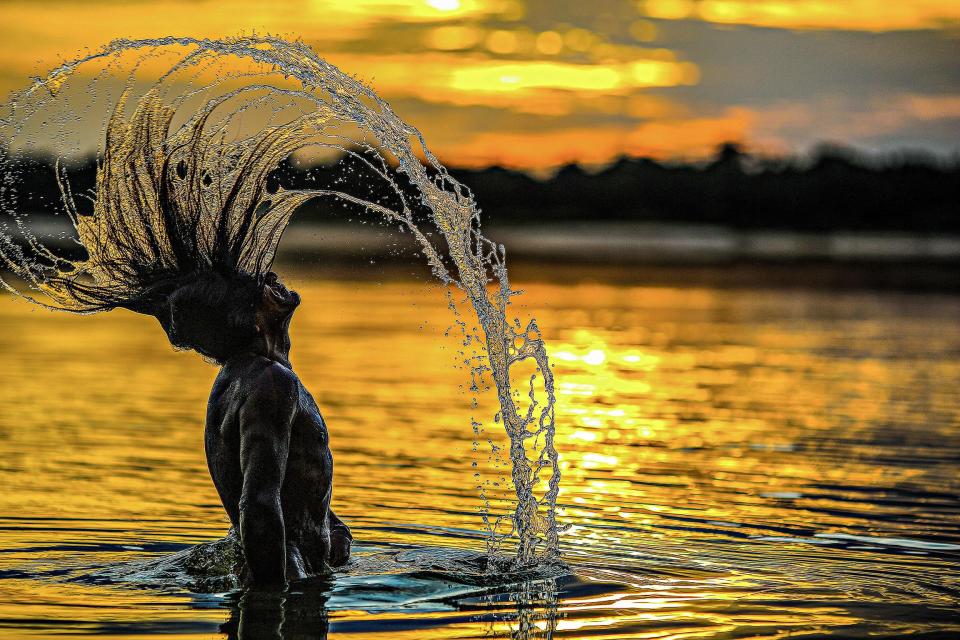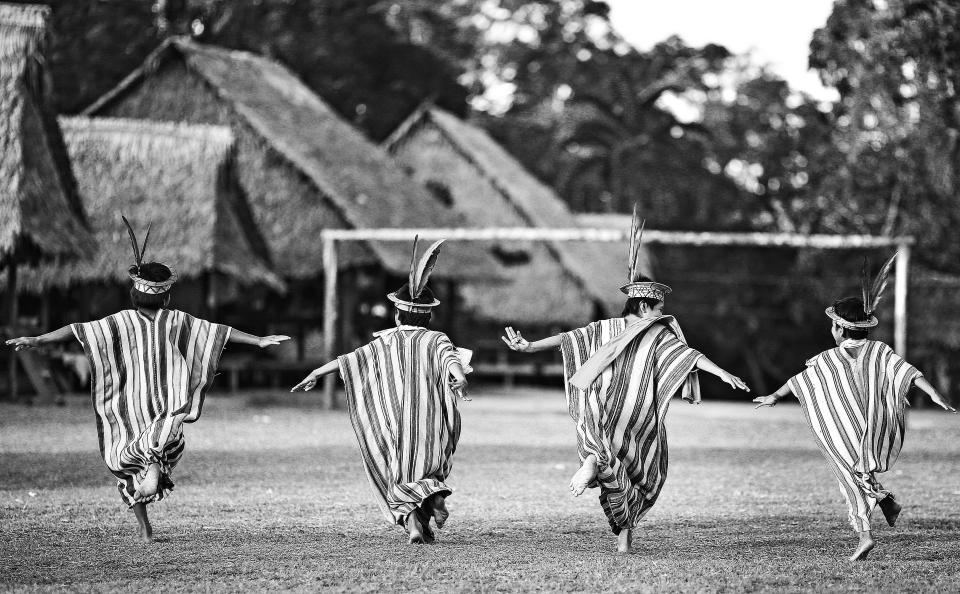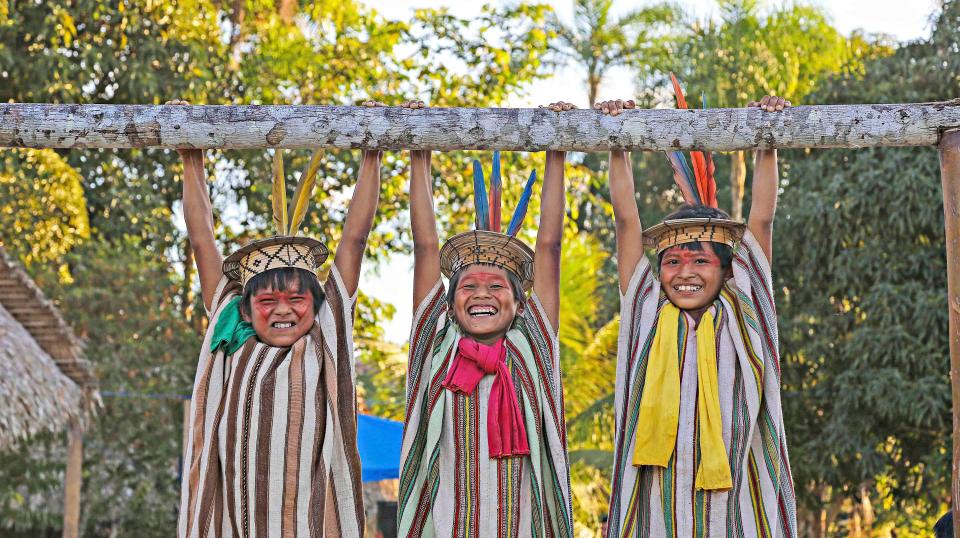Stunning images capture mysterious Brazilian tribes almost wiped out by disease balancing on trees and swimming underneath waterfalls
The images show the Amazonian tribes at one with the world around them

THESE incredible images offer a rare insight into mysterious Brazilian tribes which were almost wiped from existence.
Taken by photographer Ricardo Stuckert, the stunning snaps show the grace with which they swim underwater and balance on tree branches.
They include a Yawalapiti Indian standing under an illuminated waterfall in a scene evoking memories from hit science fiction film Avatar.
An indigenous woman covered in tattoos swims gracefully beneath the crystal clear waters in Chapada dos Veadeiros in another poignant snap.
Meanwhile the Kaxinaw, totally at one with nature, are seen balancing perfectly on thin branches in the Amazon forest.
These men are experts in carving tools from wood and equally adept at making weapons including clubs, spears, and arrows.
Ricardo spent time with the indigenous people to help document what life is really like for the community.
In 2015, he began to photograph native tribsepeople to make a historical record for his book Brazilian Indians.
Award winning photographer Ricardo, 47, said: "The pictures show the traditional way of life of these people who live in harmony with nature.
"The photos provide an overview of the contemporary situation of the indigenous people in Brazil. The images underwater were made when the Kamaiurá India was diving in the waterfall.
"I've been a professional photographer for 29 years, and have been photographing Brazil's Indigenous people since 1996, when I visited an Yanomany tribe.
"Since then, I have become a strong supporter of Indigenous people. Now I am producing a book and have already taken pictures of almost every Brazilian tribe.
"The objective is to show how they live presently, and how they survive in a modern society.
"They live in perfect harmony with nature and show that it is still possible to survive in some areas, of course, even in a very technological society.
"Indigenous people were the first to live in Brazil. We owe them an important part of every aspect of our culture.
"They are warriors that still fight against a lot of adversities. They love nature and fight for it.
"That's why I decided that my present project is to publish a book titled Brazilian Indians in 2018, as part of an effort to help them."
We pay for your stories! Do you have a story for The Sun Online news team? Email us at tips@the-sun.co.uk or call 0207 782 4368. You can WhatsApp us on 07810 791 502. We pay for videos too. Click here to upload yours.


